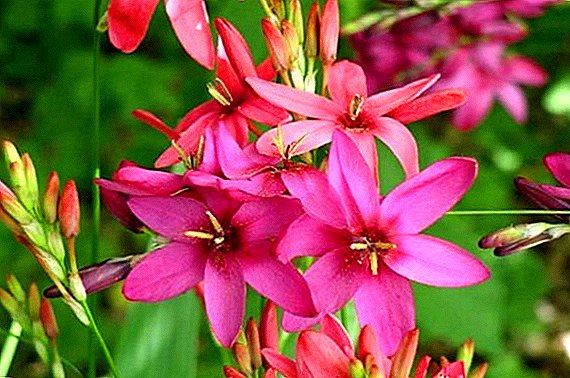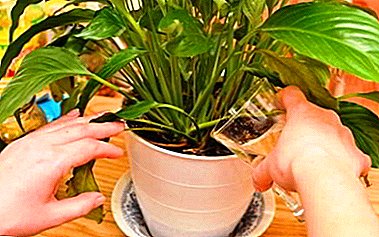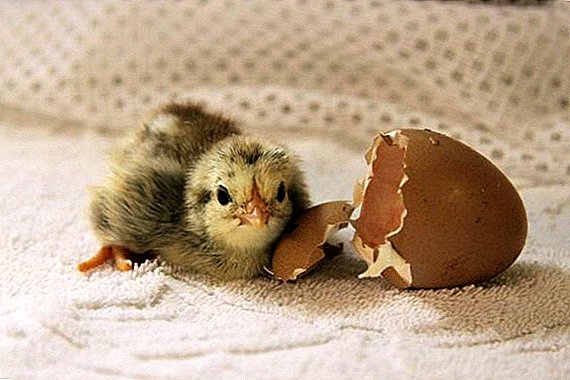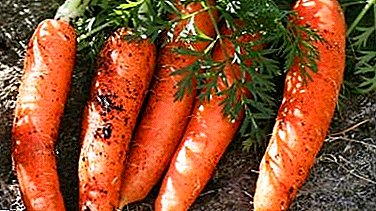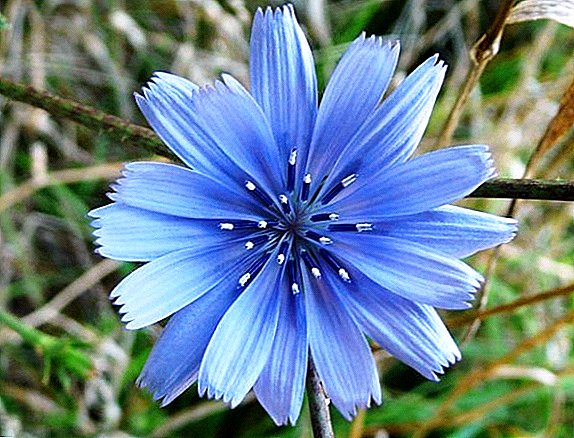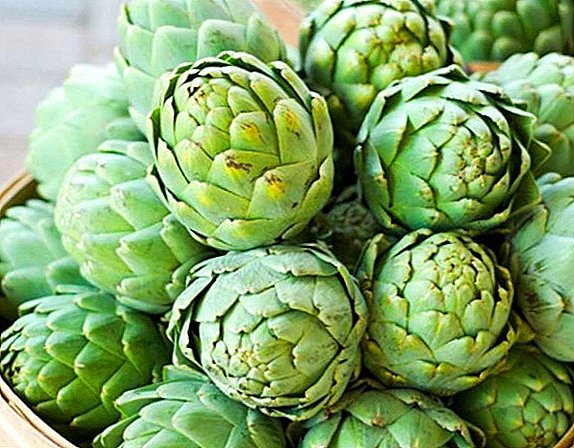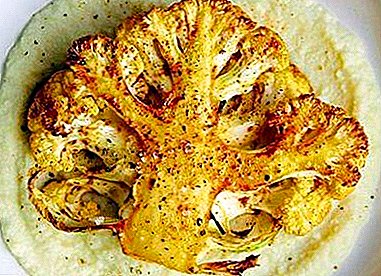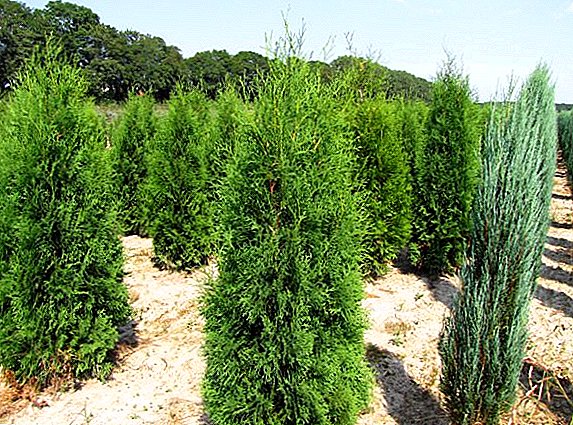 Thuja western Columna (Thuja occidentalis Columna) - this coniferous evergreen plant, genus Tui, family Cypress. In nature, it grows in eastern North America. And in ornamental gardening - on all continents. It is found on the territory of both private sites and public parks and squares, used for group and single plantings.
Thuja western Columna (Thuja occidentalis Columna) - this coniferous evergreen plant, genus Tui, family Cypress. In nature, it grows in eastern North America. And in ornamental gardening - on all continents. It is found on the territory of both private sites and public parks and squares, used for group and single plantings.
We will dedicate the following article to this wonderful representative of flora and agricultural technology of its cultivation.
Did you know? The word "thuja" ("thuja") comes from the Greek language. It means "sacrifice" or "incense." This is due to the fact that during the burning of this wood of aromatic rocks during the ancient sacrifices a pleasant aroma spread.
Thuja western Columna: characteristics and features
Thuja Columna is a special variety of this plant, in the description its frost resistance and resistance to sunburn are important. It has a narrow, kolonovidnuyu form, short, horizontally diverging branches. It belongs to long-livers, it can live to 200 years of age. Usually it grows up to 8 m, but there are also specimens in 10 m high (it is the only variety of columnar tui that can grow above 8 m).  It grows rather slowly. Young trees add 15 cm height each year. As for the diameter of the crown of the Tummy Columna, then it grows to a maximum of 1.5 m, adding 5 cm in volume annually. The bark is red-brown, brick, not smooth. The needles themselves scale-like, dark green, thick, shiny. The root system consists of thin and dense processes with mycorrhiza. Cones are brown, round, seeds are flat.
It grows rather slowly. Young trees add 15 cm height each year. As for the diameter of the crown of the Tummy Columna, then it grows to a maximum of 1.5 m, adding 5 cm in volume annually. The bark is red-brown, brick, not smooth. The needles themselves scale-like, dark green, thick, shiny. The root system consists of thin and dense processes with mycorrhiza. Cones are brown, round, seeds are flat.
Choosing a place for landing
When planting, give preference to an open solar area or partial shade. In a very shaded place with too dry soil the plant will wither. Since the thuja Columna has a rather large height and volume, it should be planted at a distance of at least 3 m from other crops so as not to obscure them.
To soil the plant is not demanding, will grow on acid and alkaline. But it is important that the substrate has a high permeability and is fertile. With loamy soil and close groundwater, it is necessary to make a drainage of 15-20 cm. It is desirable that the landing site be protected from the winds to prevent drying out and dehydration, including in cold weather. 
All the details of planting thuja Columna
 When planting the Columna thuja, the distance between the trees should be 3-5 m. The size of the planting pits depends on the size of the sapling (height and width of its crown) and its planting soil.
When planting the Columna thuja, the distance between the trees should be 3-5 m. The size of the planting pits depends on the size of the sapling (height and width of its crown) and its planting soil.
Prepare a mixture of turf land, peat and sand in a ratio of 2: 1: 1. Add 0.5 kg of mineral fertilizers to each pit. When digging in, place the root collar of the seedling at ground level.
Did you know? The first description of the western thuja was presented by Karl Linney in the middle of the 18th century. At the same time, it received its biological name.Tuyu Kolomna is also often used as a hedge. In this version of the landing distance depends on the number of rows: 1 row - 50-70 cm, 2 rows - 30-50 cm, and when planting the alley - about 4 m.
Features of care for Tummy Columna
Like any other plant, such a thuja needs proper care. And although this tree is not distinguished by special whims, but with the observance of certain agrotechnical rules its decorative effect, as well as resistance to diseases and pests will be higher.
Watering, loosening and soil mulching
In the first month after planting, the Columna must be watered once a week with 10 liters of water, and during the dry period this rate (both the volume and frequency of irrigation) should be doubled.
Important! Favorable effect on the plant daily irrigation. This is due to the fact that a lot of moisture evaporates through the crown. Besides the fact that you will wash off the dust, you will also contribute to the intensification of gas exchange in the needles, thus improving the appearance of the thuja.Loosening is carried out regularly, usually after watering or weeding. Given the superficial root system of the plant, it should not be deep (8-10 cm). For mulching suitable peat or wood chips. Layer thickness - 7 cm.
Fertilization
After planting with fertilization, the plant does not need feed during the year. Next should be fed in the early spring period with complex fertilizer (100 g per sq. M).
Cropping and crown formation
Thuja Columna needs a regular haircut and tolerates it well. Sanitary pruning of dry, damaged or diseased shoots is carried out every spring. Decorative pruning is not subject to strict time limits, but it is desirable to implement it in the spring or late summer. 
Important! When forming a hedge, you should not trim more than one third of the length of the branches.
Shelters of young plants for the winter
Mature trees are frost resistant. But in the first year of hibernation of a young thuja, in order to protect the plant not only from frost, but also winter-spring sunburns, it must be covered with spruce branches, kraft paper or a special white synthetic non-woven protective material.
Pest and disease control
Thuja Columna can be attacked by thug aphids and false guards.
Tuevaya aphid - It is a gray-brown insect that settles in colonies on the underside of the shoots. It hurts the needles, it begins to turn yellow and fall off. To get rid of the pest, process the plant with "Malophores", if necessary, the procedure should be repeated. 
Thuye pseudo shield able to cause great harm to the thuja. To fight, before the buds bloom, in the summer, during the period of mass exits of strollers, spray the tree with Karbofos and Aktellik.
Among the diseases found drying of shootscaused by fungus. In early spring, on some shoots, the scales turn yellow, then the shoots themselves turn brown and fall off. Patients shoots should be removed and 2 times a month (July-October) spray the crown with a solution of "Fundazol" (0.2%). 
Did you know? Traditional medicine recommends the use of infusions and decoctions based on the bark and leaves of thuja as a laxative, as well as diaphoretic, diuretic and lactogonic agents.
As you could see, the thuja western Columna is a beautiful, universal ornamental plant, in which it is not difficult to plant and care. Using such a tree in landscape design, you will get a lot of positive impressions, starting with a great appearance and ending with a pleasant aroma.


